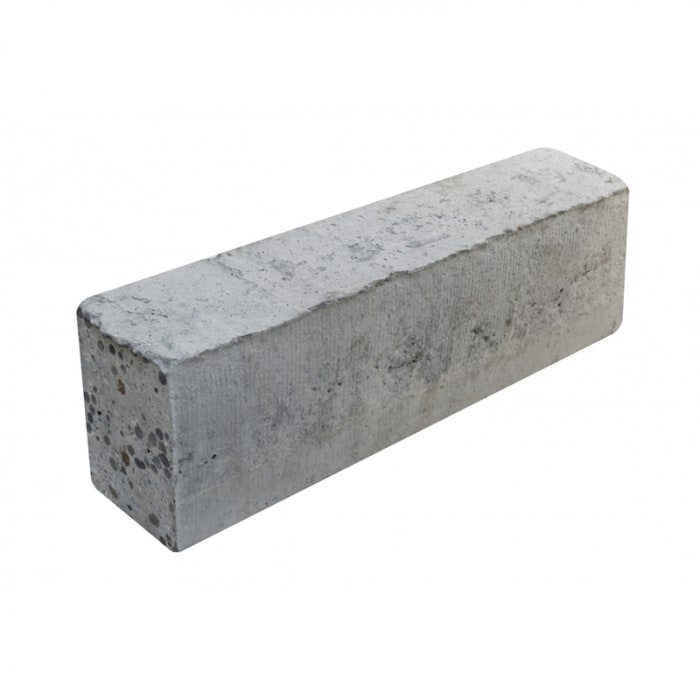Padstones
(6 Products)Padstones are load-bearing blocks that distribute weight evenly, preventing undue stress on a single point within a structure. While they were originally made from cut stone - hence the name - modern padstones are typically crafted from concrete. They are often used to provide bearing at the ends of beams and concrete lintels where they meet a wall or surrounding block or brick structure. Stronger than masonry blocks, padstones are an essential preventive measure against structural failure.
What Are Padstones?
Precast concrete padstones are dense, high-strength concrete blocks designed to sit beneath lintels or beams in a building’s structure.
Their main purpose is to evenly distribute the structural load, preventing localised stress that could cause damage, such as cracking or crushing of the surrounding blockwork.
How They Work
Padstones take a significant concentrated load from a structural member, typically a steel beam (RSJ, UB, UC), a precast concrete lintel, or sometimes a heavily loaded timber beam, and distribute this force over a wider area of the supporting masonry - be it brickwork or blockwork.
Masonry units like standard bricks or concrete blocks, while strong in overall compression when loads are distributed, can have limited bearing capacity when subjected to high point loads.
Without a padstone, the intense pressure at the bearing point of a beam or lintel could exceed the crushing strength of the individual masonry units directly beneath it, leading to cracking, spalling, or even a localised collapse of the supporting structure.
The padstone, therefore, acts as an intermediary, mitigating this risk by reducing the bearing stress on the underlying masonry to a structurally tolerable level.
Applications
Padstones are essential in any construction project involving the support of heavy loads, such as steel beams or concrete lintels.
They are embedded in bearing walls to ensure that the concentrated weight is effectively dispersed, maintaining the structural integrity of the building.
Benefits of Precast Concrete Padstones
- Superior Load Distribution: Padstones are engineered to handle the concentrated load of steel beams and concrete lintels, far surpassing the capabilities of standard masonry blocks. Their high-density composition ensures stability and prevents failure under heavy loads.
- Compliance and Convenience: Precast padstones adhere to CE regulations, ensuring quality and safety. They eliminate the need for on-site casting, offering a ready-to-use solution that saves time and labour during construction.
- Structural Integrity: By distributing weight evenly, padstones prevent potential cracking and structural damage. This effective load transfer minimises the risk of damage to lintels and surrounding structures, providing enhanced durability and reliability.
Concrete Padstone Key Features
- Compressive Strength: Typically manufactured to a compressive strength of 50 N/mm²
- Load-Bearing Capacity: Provides a robust base for lintels and steel beams
- Crack Prevention: Mitigates the risk of cracks and structural damage
- Efficient Load Transfer: Reduces the risk of improper lintel load transfers
- Instant Application: No need for on-site casting, facilitating quick installation
- Versatile Orientation: Can be used in any orientation to suit specific project needs
Frequently Asked Padstones Questions
What Does Cast In-Situ Mean?
Cast in-situ, otherwise known as cast-in-place concrete, refers to a process in which a building's structural components are poured, moulded and cured at the site in formwork.
With precast concrete, however, slabs are cast on a different site and are instead, delivered to the construction site before their assembly.
What Is Better: Precast Concrete Or In-Situ Concrete?
Precast concrete tends to be more durable than cast-in-place concrete. The carefully monitored curing process of precast concrete sets the seal on the quality of the product's finish.
Another factor which lends itself to precast's supremacy is the lack of disruption from external factors such as weather conditions. With in-situ concrete, you have to be wary of rain, hail and other elements which may serve to harm the final form of the casting.
How Are Pre-Cast Padstones Manufactured?
Precast padstones are created by combining specific proportions of aggregates, cement, and water, which are then poured into moulds. To further enhance the properties of the final product, additional materials such as prestressed cable reinforcement can be added to increase the concrete’s strength.
After moulding, the padstones are cured in a carefully controlled environment to ensure optimal performance and durability.


